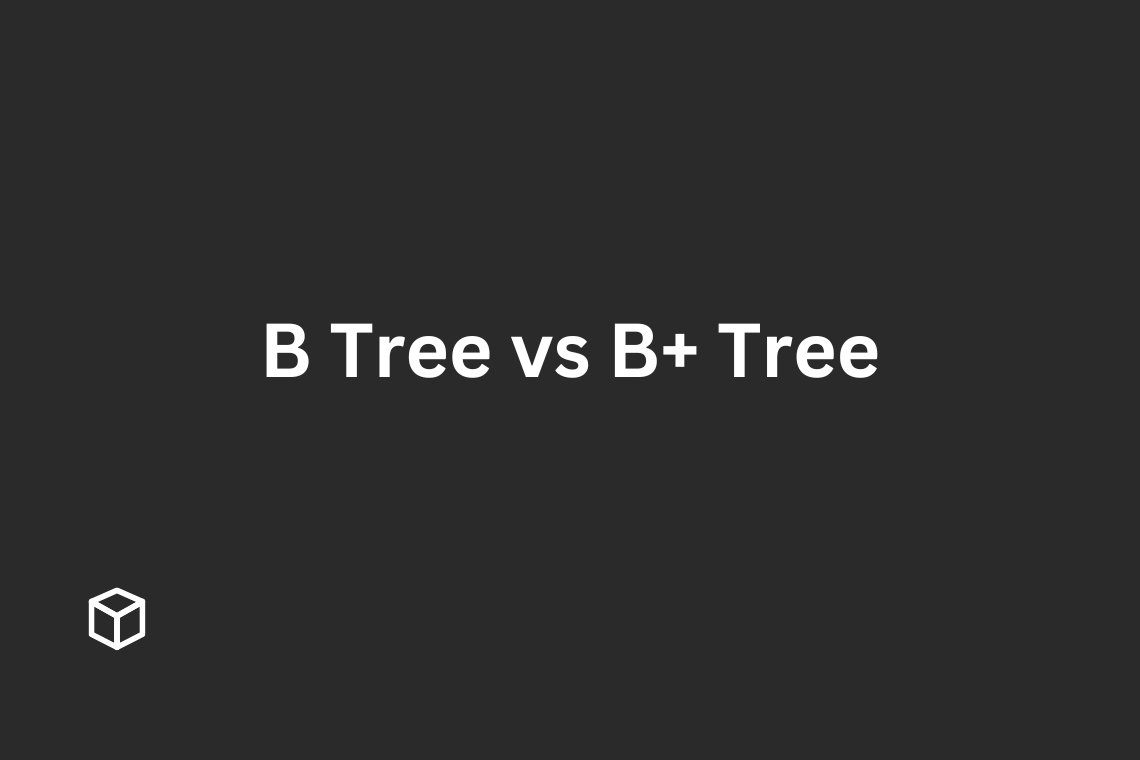When it comes to database management and data storage, B-trees and B+ trees are two of the most popular indexing methods used.
Both B-trees and B+ trees are self-balancing tree data structures that are efficient in searching, inserting, and deleting data.
However, despite their similarities, there are some key differences between B-trees and B+ trees that make them more suitable for different use cases.
In this article, we will discuss the definition, purpose, and comparison of B-trees and B+ trees, as well as their advantages and disadvantages, to help you choose the right one for your needs.
B-Trees
A B-tree is a self-balancing tree data structure that is used for storing and searching large data sets.
It is designed to work with disk-based systems, such as hard drives and solid-state drives, and is commonly used in database management systems and file systems.
B-trees are characterized by their large branching factor, which allows them to store a large number of keys in each node, making them well-suited for systems with high storage capacity.
How B-trees Work
B-trees are made up of nodes, with each node containing a set of keys and pointers to other nodes.
The root node is the topmost node in the tree, and it is connected to other nodes through pointers.
The keys in each node are sorted in ascending order, and the tree is balanced by adjusting the number of keys in each node.
When a new key is inserted into the tree, the tree is rebalanced to maintain its balanced state.
When a key is deleted from the tree, the tree is again rebalanced to maintain its balance.
Use Cases for B-trees
B-trees are commonly used in database management systems, such as MySQL and Oracle, as well as in file systems, such as NTFS and ext3.
They are also used in other applications that require efficient searching and insertion of large data sets, such as geographic information systems and computer-aided design systems.
Advantages and Disadvantages of B-trees
One of the main advantages of B-trees is their large branching factor, which allows them to store a large number of keys in each node.
This makes them well-suited for systems with high storage capacity. B-trees also have a good balance between search and insertion performance, making them efficient in both operations.
However, one of the main disadvantages of B-trees is that they can take up a lot of space on disk, which can be a problem for systems with limited storage capacity.
B+ Trees
A B+ tree is a variation of the B-tree data structure that is used for storing and searching large data sets.
Like B-trees, B+ trees are self-balancing tree data structures that are efficient in searching, inserting, and deleting data.
However, there are some key differences between B-trees and B+ trees that make them more suitable for different use cases.
How B+ trees Work
B+ trees are made up of nodes, with each node containing a set of keys and pointers to other nodes.
The root node is the topmost node in the tree, and it is connected to other nodes through pointers.
The keys in each node are sorted in ascending order, and the tree is balanced by adjusting the number of keys in each node.
When a new key is inserted into the tree, the tree is rebalanced to maintain its balanced state.
In B+ trees, all data is stored in the leaf nodes, while non-leaf nodes only contain keys and pointers to other nodes.
This allows for faster and more efficient searching of data, as all data can be found in one place – the leaf nodes.
Use Cases for B+ Trees
B+ trees are commonly used in database management systems, such as PostgreSQL and MongoDB, as well as in file systems, such as ext4 and XFS.
They are also used in other applications that require efficient searching and insertion of large data sets, such as data warehouses and business intelligence systems.
Advantages and Disadvantages of B+ Trees
One of the main advantages of B+ trees is that they are more space efficient than B-trees, as all data is stored in the leaf nodes, allowing for more efficient storage of data.
B+ trees also have faster search performance than B-trees, as all data can be found in one place – the leaf nodes.
However, one of the main disadvantages of B+ trees is that they have slower insertion performance than B-trees, as all data needs to be stored in the leaf nodes.
Differences between B-Trees and B+ Trees
Storage of data:
B-trees store data in both leaf and non-leaf nodes, while B+ trees store all data in leaf nodes only.
Search and insertion performance:
B+ trees have faster search performance than B-trees, but slower insertion performance. B-trees have good balance between search and insertion performance.
Space utilization:
B+ trees are more space efficient than B-trees as all data is stored in leaf nodes.
Conclusion
In conclusion, B-trees and B+ trees are both self-balancing tree data structures that are efficient in searching, inserting, and deleting data.
However, there are some key differences between B-trees and B+ trees that make them more suitable for different use cases.
B-trees are well-suited for systems with high storage capacity, while B+ trees are more space efficient and have faster search performance.
Choosing the right one depends on the specific needs of your application.
It is always a good idea to consult with a database expert to make the right choice.
References
- Cormen, Thomas H., et al. “Introduction to algorithms.” MIT press, 2009.
- “B-tree” Wikipedia, The Free Encyclopedia. https://en.wikipedia.org/wiki/B-tree
- “B+ tree” Wikipedia, The Free Encyclopedia. https://en.wikipedia.org/wiki/B%2B_tree




